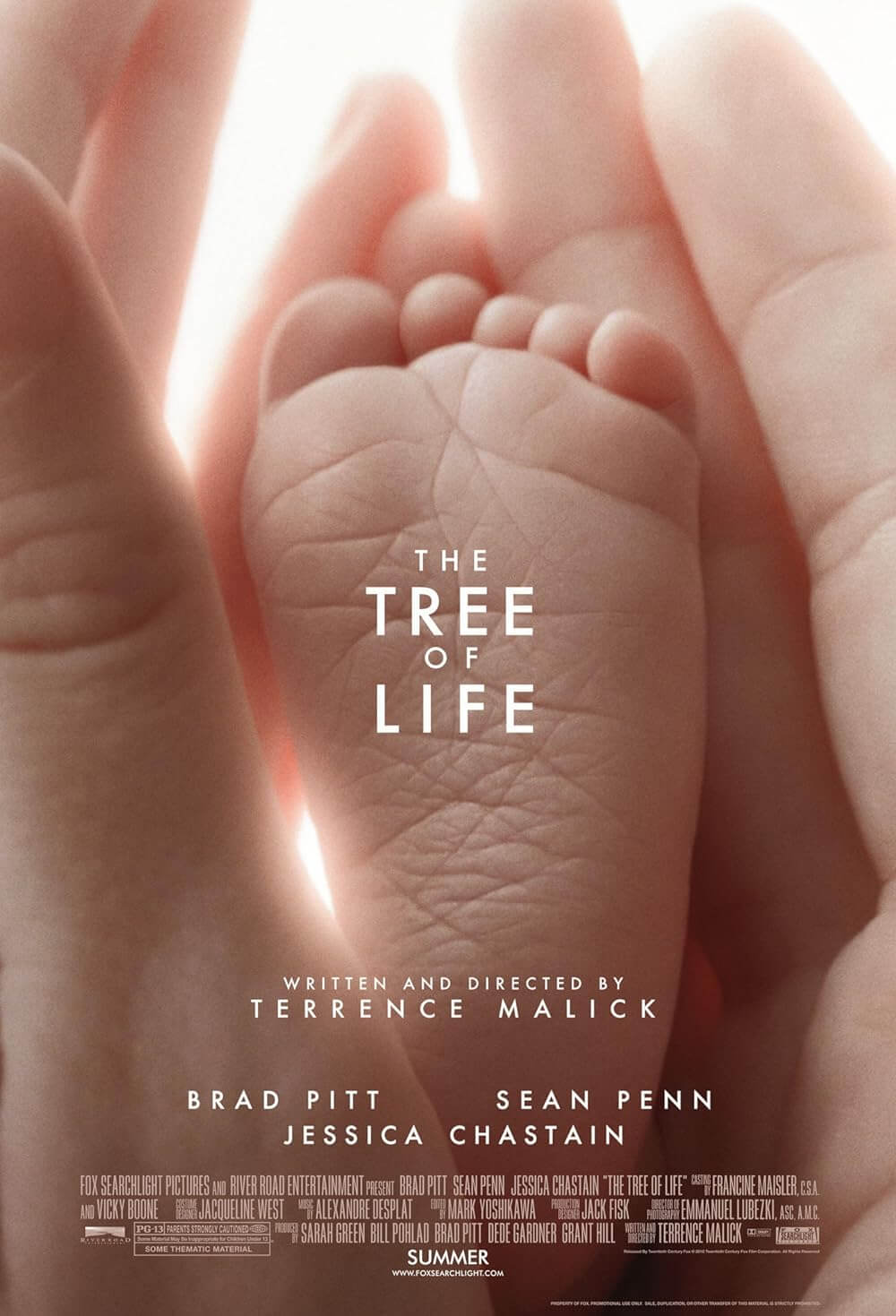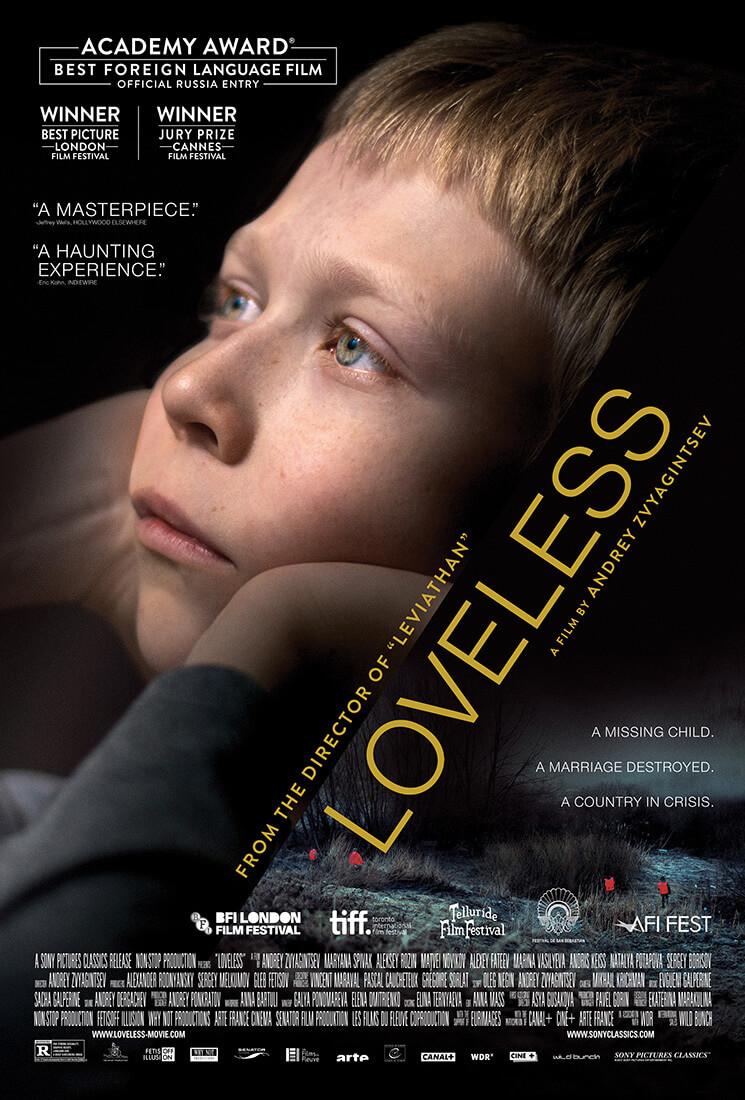The Definitives
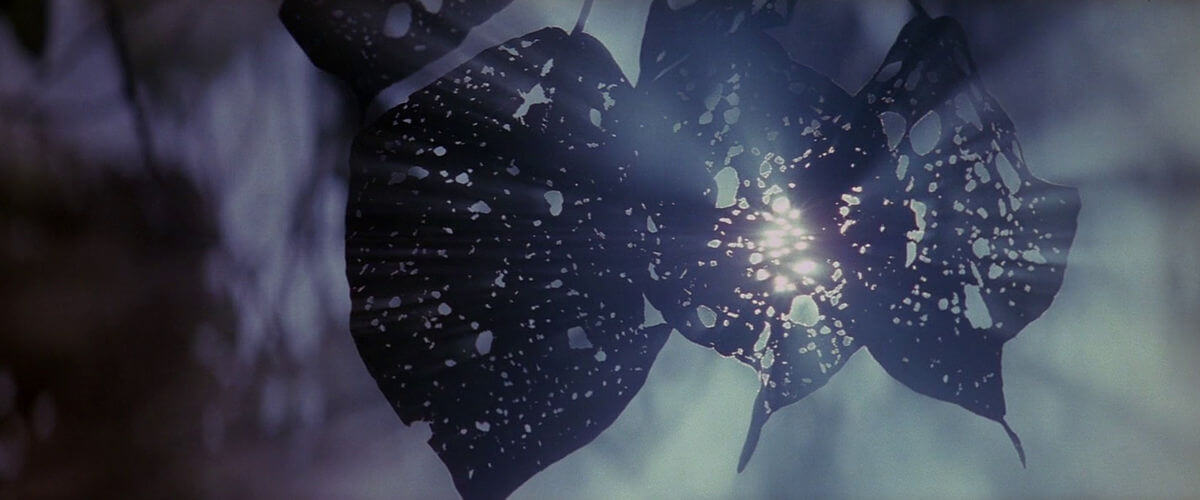
The Thin Red Line
Essay by Brian Eggert |
Terrence Malick’s The Thin Red Line should not be seen as much as experienced through the perception of flowing images and existential questioning. Set in the Pacific during World War II, Malick’s work of poetic splendor does not contain typical war film motifs, nor does it resort to the nostalgic heroism of its genre’s predecessors. His film considers the war that exists between earthly and metaphysical ideals, between existence and transcendence, between acceptance and searching. With only Badlands in 1973 and Days of Heaven in 1978 behind him, Malick returned after a twenty-year hiatus from filmmaking in 1998 with one of the most daring and artful productions ever achieved by a major studio. Malick, an enigmatic and legendary presence in cinema, embraces transcendentalist themes to question the ways in which Nature and war are inescapable truths of existence, but in turn refuses to answer such questions within the film, demanding viewers search themselves for answers.
Based on James Jones’ novel of the American siege for Hill 210 in the Guadalcanal conflict, the literal war onscreen gives way to the existential battle expounded in the characters—a mass of American soldiers portrayed by one of the most impressive casts ever assembled. Through the soldiers’ ponderous exchanges and elegiac voiceover, Malick’s purpose may seem unknowable, but hints and suggestions throughout render an audience rapt in his film’s natural brilliance and moving sentiments. The director remains hushed about his process and the meaning of his work in the hope that his films speak for themselves. He refuses to assign tangible meaning, so his elusive purpose flows with the subjectivity of the viewer through the cipher of the protagonists, all searching for their reason of being through the boundaries of their spiritual self.
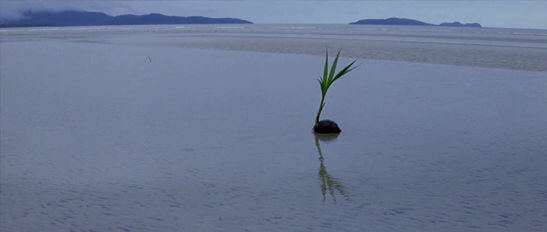 Malick himself is just as elusive. The little known about his personal life invites speculation and accounts of his past read like a resume. His scholars note odd jobs taken as a young man, detail papers written at Harvard and Oxford, and list his filmography. Having studied philosophy and published a translation of Martin Heidegger’s Der Satz vom Grund (under the title The Essence of Reasons), the seed of Malick’s thematic and philosophical origins seems quite straightforward. Identifying his cinematic influence with any accuracy, given his limited output, would be impossible, however, likening him to J. D. Salinger, a common association. Scholars that do engage “Malick: The Man” limit themselves by the desperate guesswork that ensues. For what other reason than some exploratory, if not projected search for auteuristic details within the films do these arguments occur, when Malick himself demands such absolute viewer participation through his silence? Given his limited output yet encompassing style from picture to picture, there is no doubt that Malick is an auteur. But delving into the biographical question of why he makes the films he does circumvents the profound connection his films hope to make.
Malick himself is just as elusive. The little known about his personal life invites speculation and accounts of his past read like a resume. His scholars note odd jobs taken as a young man, detail papers written at Harvard and Oxford, and list his filmography. Having studied philosophy and published a translation of Martin Heidegger’s Der Satz vom Grund (under the title The Essence of Reasons), the seed of Malick’s thematic and philosophical origins seems quite straightforward. Identifying his cinematic influence with any accuracy, given his limited output, would be impossible, however, likening him to J. D. Salinger, a common association. Scholars that do engage “Malick: The Man” limit themselves by the desperate guesswork that ensues. For what other reason than some exploratory, if not projected search for auteuristic details within the films do these arguments occur, when Malick himself demands such absolute viewer participation through his silence? Given his limited output yet encompassing style from picture to picture, there is no doubt that Malick is an auteur. But delving into the biographical question of why he makes the films he does circumvents the profound connection his films hope to make.
As a result, identifying stylistic influence or direct associations between Malick and earlier filmmakers also becomes speculation, even if apt comparisons have been made between his work and that of Werner Herzog (Fitzcarraldo) and Stanley Kubrick (2001: A Space Odyssey). In terms of Malick’s limited productivity and artistic acclaim, Kubrick compares, but his fourteen features over forty-six years is prolific next to Malick’s output, a mere four films in thirty-seven years. And much like Kubrick, Malick’s films have more in common with European filmmakers than the American filmmakers of his era, in that they feel like European art cinema, whereas his Hollywood contemporaries (such as Francis Ford Coppola, Brian De Palma, Martin Scorsese, and Steven Spielberg) made art into high entertainment. As for Herzog, Malick compares in that both filmmakers dwell on history, humanity, and Nature in the same ponderous ways, but Herzog’s pictures lack Malick’s ethereal, poetic purpose that expels any need for a straightforward storyline. Herzog’s films rely on narrative to haunting extremes, as a good story has always been important to him. Moreover, all three filmmakers choose ambitious subjects but reduce them to personal concerns of the individual; yet they retain their grandeur through ruminative atmospheres and majestic classical music to deliver epics of personal reflection. Nevertheless, being a true original, Malick’s signatures are best not defined through their comparisons to earlier pioneers of cinema, but by their usage.
After the underwhelming release and commercial failure of Days of Heaven, despite high praise from critics and four Academy Award nominations, Malick retreated to Paris in 1979, beginning his famous hiatus from filmmaking. During this time, his name would be attached to failed projects, such as a biopic of Jerry Lee Lewis that later became the one-dimensional Great Balls of Fire!, but these in-between projects all failed to coagulate. Malick came to make The Thin Red Line after producers Rober Geisler and John Roberdeau negotiated with his agent, Michal Medavoy, for nearly a decade. Sony had originally agreed to finance the project, budgeted at $52 million, but dropped out in fear that it would go over budget. Hollywood had changed much since Malick had last made a film; with major corporations buying the great studios and blockbuster filmmaking a priority, visionary films like those Malick had made previously were difficult to come by.
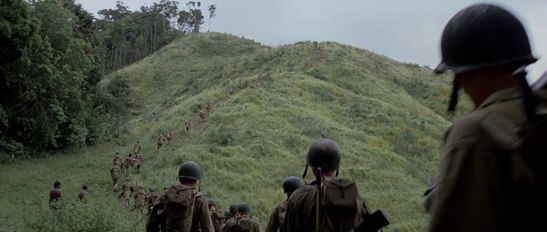 Fox 2000 agreed to finance on the condition that notable stars populate the cast, and with the director’s reputation in mind, performers flocked to give screen tests. The cast as it appears in the film remains unparalleled for its star power: George Clooney, John Cusack, Nick Nolte, James Caviezel, Sean Penn, Thomas Jane, John C. Reilly, John Travolta, Elias Koteas, and Ben Chaplin fill the cast, some with only periphery roles. And still, there were actors such as Kevin Costner, Lukas Haas, Viggo Mortensen, Gary Oldman, Bill Pullman, Mickey Rourke, Martin Sheen, and Billy Bob Thornton who tried for roles and were not cast, or whose roles were filmed but their scenes were left on the cutting room floor. Amazingly, despite these stars, Fox’s advertising campaign focused on the director’s return. Shooting took place in Australia and the Solomon Islands over a hundred days. Geisler and Roberdeau were banned from the set by Malick after persistent arguments took place over the director’s approach. Malick threatened to remove their names from the credits if they appeared on the set again. Academy Award-winning cinematographer John Toll grew frustrated with Malick’s improvisation onset and harsh shooting schedule, which ultimately produced more than a million feet of footage for the initial cut. In post-production, Malick would improvise even more when he reduced the six-hour raw cut by half, and then added the film’s signature voiceovers, which were not in the script.
Fox 2000 agreed to finance on the condition that notable stars populate the cast, and with the director’s reputation in mind, performers flocked to give screen tests. The cast as it appears in the film remains unparalleled for its star power: George Clooney, John Cusack, Nick Nolte, James Caviezel, Sean Penn, Thomas Jane, John C. Reilly, John Travolta, Elias Koteas, and Ben Chaplin fill the cast, some with only periphery roles. And still, there were actors such as Kevin Costner, Lukas Haas, Viggo Mortensen, Gary Oldman, Bill Pullman, Mickey Rourke, Martin Sheen, and Billy Bob Thornton who tried for roles and were not cast, or whose roles were filmed but their scenes were left on the cutting room floor. Amazingly, despite these stars, Fox’s advertising campaign focused on the director’s return. Shooting took place in Australia and the Solomon Islands over a hundred days. Geisler and Roberdeau were banned from the set by Malick after persistent arguments took place over the director’s approach. Malick threatened to remove their names from the credits if they appeared on the set again. Academy Award-winning cinematographer John Toll grew frustrated with Malick’s improvisation onset and harsh shooting schedule, which ultimately produced more than a million feet of footage for the initial cut. In post-production, Malick would improvise even more when he reduced the six-hour raw cut by half, and then added the film’s signature voiceovers, which were not in the script.
The film was released two months after Spielberg’s Saving Private Ryan, a classical war picture that was adored by critics and general audiences, and would earn blockbuster numbers at the box office. The Thin Red Line opened to favorable if frequently disappointed reviews from critics and cinephiles who had anxiously awaited Malick’s return. Citations argue that Malick departs from Jones’ novel, misuses his cast of celebrity actors, and fills his film with historical inaccuracies. The film would only make $81 million, but in many ways, the success of Spielberg’s film foretold the failure of Malick’s commercially. Spielberg caters to his audience and delivers marketable entertainment, albeit well-constructed and often artfully composed; Spielberg’s films are rarely ambiguous and almost never fail in delivering high energy and clearly defined emotional solutions. Saving Private Ryan offers a lucid, goal-driven conflict and distinct set of pro-American principles, whereas The Thin Red Line retains humanist, apolitical themes that question the purpose of all war. Spielberg’s film revels in American pride for victory in a morally justified global conflict, and Malick ignores the politics of “the Good War” for a meditation on Nature’s indifference to mankind.
The Thin Red Line opens with the image of a crocodile crawling into its lagoon, then a voiceover asking “What is this war in the heart of Nature?” Rather than a dramatic war film about characters and their battlefield trials, Malick’s opening establishes a metaphysical theme that places humans within the natural world—a larger schema involving Nature’s connection to spirituality. Malick dwells upon the insignificance of actual war, rarely mentioning Guadalcanal or “the mission” in any terminology that would denote the goals of the characters, nor America, within the setting. Through voiceover and dialogue, protagonists ask questions that remain unspecific to political or character-driven concerns and story arcs, since Malick’s characters represent a functional metaphor within the film’s transcendent questions of existence.
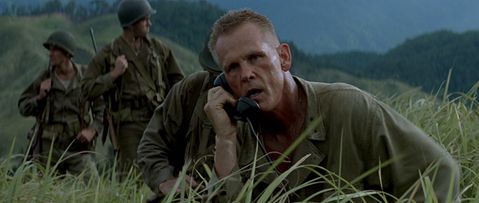 Displaced and far from home in a war, Malick’s characters search for themselves in their solitude, trying to eke out an ideal from the chaos. They are present to consider the line between life and death, but also humanity’s ongoing ignorance of Nature, the existence of war as a “great evil”, the existence of the spiritual, and the importance of love in reflection of these realities. Nick Nolte plays Colonel Tall, a man burdened by his lack of experience in the battlefield and desperate need for professional recognition; he has sacrificed having a family and the lives of his men for his profession, and he will continue to do so. Tall is the dismal extreme of material militaristic force, completely ignorant to that which exists outside of campaigns and promotions. Tall gives calculating but merciless orders to his men, led by Captain Staros (a quietly noble Elias Koteas). Staros believes life should be protected more than Tall’s blind need for victory, and he refuses Tall’s orders. Within the company, Private Bell (Ben Chaplin) longs for the love of his wife and dreads battle because of it, while Corporal Fife (Adrien Brody) remains petrified at the thought of battle and ultimately death.
Displaced and far from home in a war, Malick’s characters search for themselves in their solitude, trying to eke out an ideal from the chaos. They are present to consider the line between life and death, but also humanity’s ongoing ignorance of Nature, the existence of war as a “great evil”, the existence of the spiritual, and the importance of love in reflection of these realities. Nick Nolte plays Colonel Tall, a man burdened by his lack of experience in the battlefield and desperate need for professional recognition; he has sacrificed having a family and the lives of his men for his profession, and he will continue to do so. Tall is the dismal extreme of material militaristic force, completely ignorant to that which exists outside of campaigns and promotions. Tall gives calculating but merciless orders to his men, led by Captain Staros (a quietly noble Elias Koteas). Staros believes life should be protected more than Tall’s blind need for victory, and he refuses Tall’s orders. Within the company, Private Bell (Ben Chaplin) longs for the love of his wife and dreads battle because of it, while Corporal Fife (Adrien Brody) remains petrified at the thought of battle and ultimately death.
But the film’s enduring philosophical debate transpires between two men and their opposing ideals. James Caviezel plays Private Witt, an American soldier AWOL in the South Pacific and living with Melanesian natives; when discovered in the film’s first scenes, he answers to Sergeant Welsh, played by Sean Penn. Welsh cannot understand Witt’s optimism about the world nor his futile attempts to escape duty. Welsh’s ideal proposes that the individual has been pushed by forces of economic and political origins, leaving humanity to simply stay alive by following the orders of our invented civilization. Witt’s ideal comes to him in the film’s opening scenes during his time with the Melanesians, where he learns how humankind and Nature can coexist in harmony—that we are as much a part of Nature as animals, grass, water, and trees. The film exchanges point of view, alternating between the subject of Welsh’s world and Witt’s, the real and ideal. War-ridden jaunts into a violent reality wrought by death and cruelty give way to tranquil scenes with Nature, light glimmering through treetops and lingering images of animals, principally the freedom of birds. The juxtaposition of perspectives suggests the equality between Witt and Welsh’s worlds, leaving only scale and their interpretation of existence to separate them.
In their meetings throughout the film, Witt and Welsh search for understanding of one another’s outlook. Through their conversations, Welsh associates himself with a “rock” of tangible and worldly origin, a “moving box” determined by a hierarchical system of civilization. Witt becomes a contrary “beautiful light” of faithful idealism; he has asked enough questions about the universe that he sees beyond the limitations created by humanity. He sees an indefinable “spark” within himself that will move beyond knowing, passed this structured world of politics and social structure and militaristic chains of command, into the vastness of existence that is beyond comprehension or definition in any religious or spiritual terms. And until humanity attempts to comprehend this transcendent spark by simply being, the war continues, and our existence will be lost through earthbound thinking. In the exchanges between Witt and Welsh, as well as the ruminations of other characters, Malick considers the conflict between transcendence and existence through unanswerable questions.
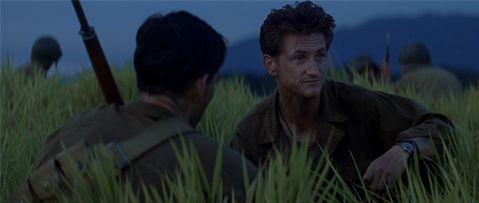 Existentialist searching occurs outwardly between Witt and Welsh, although other characters inquire internally through voiceover. The voiceover device does not serve the same purpose in a Malick picture as it would in a documentary or film noir. Since Badlands, Malick’s use of voiceover resists the need to explain plot or clarify narrative. In The Thin Red Line, poetic narration is spoken by several characters, while traditionally a film will offer only one such voice. The variance of speakers and their respective messages provide inner conversation, a human presence to a film driven by the booming force of Nature. Their voices, present to guide the viewer toward the discovery of their own meaning by way of lyrical expressions, allow openness for other possible interpretations—a significance to the material that the viewer might not normally give. To whom are these voices speaking to? Themselves? Possibly the audience? Malick employs the device, paired alongside his glorious visuals, allowing sound and image to provide an interpretive sensory experience.
Existentialist searching occurs outwardly between Witt and Welsh, although other characters inquire internally through voiceover. The voiceover device does not serve the same purpose in a Malick picture as it would in a documentary or film noir. Since Badlands, Malick’s use of voiceover resists the need to explain plot or clarify narrative. In The Thin Red Line, poetic narration is spoken by several characters, while traditionally a film will offer only one such voice. The variance of speakers and their respective messages provide inner conversation, a human presence to a film driven by the booming force of Nature. Their voices, present to guide the viewer toward the discovery of their own meaning by way of lyrical expressions, allow openness for other possible interpretations—a significance to the material that the viewer might not normally give. To whom are these voices speaking to? Themselves? Possibly the audience? Malick employs the device, paired alongside his glorious visuals, allowing sound and image to provide an interpretive sensory experience.
The Thin Red Line requires sharing from the viewer, as it asks the audience to consider the same questions posed within the film. Every narrative and technical power at Malick’s disposal centers on isolating the individual, avoiding any sense of exclusive human togetherness in favor of a sweeping, interconnected Nature. Soldiers rarely appear together in their scenes, and when they do, they ask each other probing questions that receive no response. They have no shared camaraderie among them, save for a group dive in the ocean or mail call scene, both in which every man becomes separated from each other by their individual moment in the waves, or their personalized letter from a loved one. Malick’s camera level never goes above the heads of his soldiers to look down upon them; there are few far-reaching aerial shots; angles remain on the level of the soldiers, Nature, or looking up to the sky through the trees. Unlike Spielberg’s Saving Private Ryan, Malick resists hand-held camerawork; he uses careful, steady shots that keep an observer’s distance, even in the most intimate close-ups. In segmenting characters into their respective aloneness, Malick creates a sense of solitude in the viewer that encourages a relationship with the film as a whole. Meanwhile, his cuts between soldiers and their ruminating observations on the natural world propose their unified, organic sameness inside the womb of Nature.
With the assertion that humanity retains a lesser place within a greater Nature, war provides the ultimate crime against Nature, and Hill 210 represents the film’s climactic crime scene. As American soldiers scuttle up the steep terrain to take their objective, the perspective shifts to a Japanese point-of-view as they reach the top. Malick avoids detailed violence and gory details, none of the graphic exploits that made Saving Private Ryan’s opening D-Day sequence so unforgettable; and yet, there is a feeling of defeat between both parties when the attack progresses to an American victory. With the depicted atrocities, the drive toward victory becomes an ugly battle void of any lingering devotion to the warring Americans for nationality’s sake. Amid the bedlam, a buried face of a dead Japanese soldier speaks to Witt in voiceover, asking, “Are you righteous? Loved by all? Know that I was, too.” Only Witt, and thus the viewer, recognizes that war brings death to both sides, and regardless of borders, it remains tragedy.
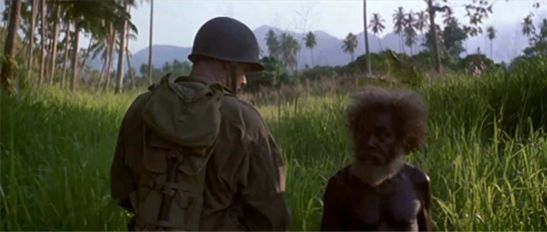 In a conceptual sense, Malick’s film does contain a humanist anti-war message. This is not to suggest that The Thin Red Line represents a typical antiwar film in the vein of Kubrick’s Paths of Glory or Full Metal Jacket, nor even the similarly ponderous approach of Coppola’s Apocalypse Now. Malick strips away any cultural markers in the narrative and avoids discussion of the motivations behind the warring parties. Viewers never gather a sense of the strategic magnitude of Hill 210 for allied forces. And comparing the film to Malick’s next release, The New World in 2005—on which the director took great care to recreate, with meticulous historical detail, the costumes, native languages, and reality of the Jamestown Settlement circa 1600—the historical relevancy seems a remote concern next to the feeling of the picture. Furthermore, the characters within the film are not set apart in any significant way; they amass to become, as Witt describes, “All faces of the same man.” Malick suggests Nature’s indifference to humanity and our struggles by showing Nature’s resolve against the most outright example of human conceit and self-importance: war. However, the antiwar message does not put forward, like so many antiwar films before The Thin Red Line have done, the madness of war or the inhumanity of the violence therein.
In a conceptual sense, Malick’s film does contain a humanist anti-war message. This is not to suggest that The Thin Red Line represents a typical antiwar film in the vein of Kubrick’s Paths of Glory or Full Metal Jacket, nor even the similarly ponderous approach of Coppola’s Apocalypse Now. Malick strips away any cultural markers in the narrative and avoids discussion of the motivations behind the warring parties. Viewers never gather a sense of the strategic magnitude of Hill 210 for allied forces. And comparing the film to Malick’s next release, The New World in 2005—on which the director took great care to recreate, with meticulous historical detail, the costumes, native languages, and reality of the Jamestown Settlement circa 1600—the historical relevancy seems a remote concern next to the feeling of the picture. Furthermore, the characters within the film are not set apart in any significant way; they amass to become, as Witt describes, “All faces of the same man.” Malick suggests Nature’s indifference to humanity and our struggles by showing Nature’s resolve against the most outright example of human conceit and self-importance: war. However, the antiwar message does not put forward, like so many antiwar films before The Thin Red Line have done, the madness of war or the inhumanity of the violence therein.
The narration’s reoccurring motif of “features of the same face” or “one mind” plays over a procession of similar looking soldiers’ faces—just one element in the grand scheme of Nature. The audience looks through Witt’s eyes to find a transcendent plane of existence, where soldiers are indistinguishable from one another in both a visual and aural sense. Upon the film’s initial release, critics who missed the point grumbled that they had no idea who was speaking through the range of voiceovers, that occasionally the narrators could not be differentiated. Yet Witt’s narration calls humanity “One big self”, making war the ultimate act of self-destruction. Punctuating this, the opening image of a serene, fierce Nature, represented by a crocodile, is contrasted by the later image of a crocodile tied in the back of an army truck, surrounded by soldiers proud of their catch—a symbol that war is a crime against Nature more than against humanity alone.
When Witt dies, Welsh asks “Where is your spark now?” and puts forward, if only for a moment, that Welsh has won their ongoing philosophical debate. Welsh, believing that nothing matters amid all this death, cannot conceive why Witt believed everything is connected, that everything matters. Has Witt’s death earned him transcendence? All Welsh sees is a grave. But Witt’s almost sacrificial death remains curiously hopeful, even for Welsh, whose reaction at the burial is that of loss, perhaps because he too has unanswered questions. Welsh may very well represent a majority too cynical to believe in Witt’s ideals, but hopeful nonetheless. His funerary prayer desires that he might “feel the lack” of Witt’s idealism. The film answers Welsh’s loss and confusion when, after Witt’s death, he is shown swimming with natives from a shot chronologically linked to the beginning of the film. Witt narrates aloud from the next world, looking upon the soldiers wrapped up in their little war, “Where is it that we were together? Who were you that I lived with? The brother. The friend. Darkness, light. Strife and love. Are they the workings of one mind? The features of the same face? O my soul, let me be with you now. Look out through my eyes. Look out at the things you made. All things shining.”
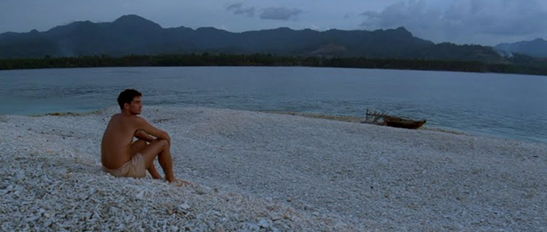 Perhaps Witt’s view of the world is Malick’s hope, a Nature existing in total equivalence, a precursor to the coming spiritual leap, an infinite subsistence in all things. He surely acknowledges that this view, whatever its specifics, remains a minority one, as Witt’s optimism goes unshared by the other characters within the film. But the revelation of the final scenes cannot help but evoke a buoyant feeling of transcendence, not unlike the odd effect left on the viewer at the end of 2001: A Space Odyssey. Something has been achieved by the end of both The Thin Red Line and Kubrick’s existential sci-fi epic; what that something is cannot be put into words. Any number of assigned meanings can be attributed to the questions therein. Scholars have explored Christian and spiritualist meanings and come no closer to solving the unsolvable. Since the war in the heart of Malick’s characters cannot be externalized, and certainly not won on the battlefield, his resonant purpose in The Thin Red Line resides somewhere in the searching feeling of the individual viewer and their impalpable emotional response.
Perhaps Witt’s view of the world is Malick’s hope, a Nature existing in total equivalence, a precursor to the coming spiritual leap, an infinite subsistence in all things. He surely acknowledges that this view, whatever its specifics, remains a minority one, as Witt’s optimism goes unshared by the other characters within the film. But the revelation of the final scenes cannot help but evoke a buoyant feeling of transcendence, not unlike the odd effect left on the viewer at the end of 2001: A Space Odyssey. Something has been achieved by the end of both The Thin Red Line and Kubrick’s existential sci-fi epic; what that something is cannot be put into words. Any number of assigned meanings can be attributed to the questions therein. Scholars have explored Christian and spiritualist meanings and come no closer to solving the unsolvable. Since the war in the heart of Malick’s characters cannot be externalized, and certainly not won on the battlefield, his resonant purpose in The Thin Red Line resides somewhere in the searching feeling of the individual viewer and their impalpable emotional response.
But before approaching any of Terrence Malick’s works, the film must be accepted with a sense of wonder—as a work of art and philosophy more than a traditional narrative piece. Malick’s provoking and questioning, which was never more ponderous than in The Thin Red Line, opens a dialogue with the audience. And when so many viewers today are accustomed to the one-sided conversations provided by Hollywood, his films proves understandably challenging. Yet the film’s questions can easily be set aside to appreciate its sheer beauty and grandeur. Cinematographer John Toll, an Oscar winner for his work on both Braveheart and Legends of the Fall, captures unparalleled images both stunning and terrifying. Breezy fields of long grass; incredible, awful explosions; sunshine gleaming through the trees; flowing streams; birds in flight or those that survey with curious eyes; wild dogs chewing away at a human carcass in the night; the indifference of a Melanesian passer-by; the contemplative faces of the collective men. These are images embedded into the viewer, unforgettable for their majesty and piercing with their implications.
Through the absence of historical detail and overall specificity, Malick creates a mythical significance to The Thin Red Line. This is coupled by the seriousness that inhabits each of his films, evident by his limited output, in that each film is a carefully selected project with an intense, personal meaning. Inside The Thin Red Line, Malick questions the existence of the spiritual, the significance of love, and evils of war in resonant, nonliteral cinematic languages, inquiring about the world by presenting it through a range of perspectives. Nature, humanity and its questions, the landscape, and the relationship between them is the subject more than any single human protagonist or their search for meaning. The particulars of his questions are not what make the film important; rather, that he asks questions at all remains essential, defining his wholly unique development of poetic expression in cinema.
Bibliography:
Chion, Michael. The Thin Red Line. Trans. Trista Selous. London: British Film Institute, 2004.
Michaels, Lloyd. Terrence Malick. Illinois: University of Illinois Press; 1st edition, 2008.
Patterson, Hannah (Editor). The Cinema of Terrence Malick: Poetic Visions of America. Second Edition. Great Britain: Wallflower Press; 2nd edition, 2007.
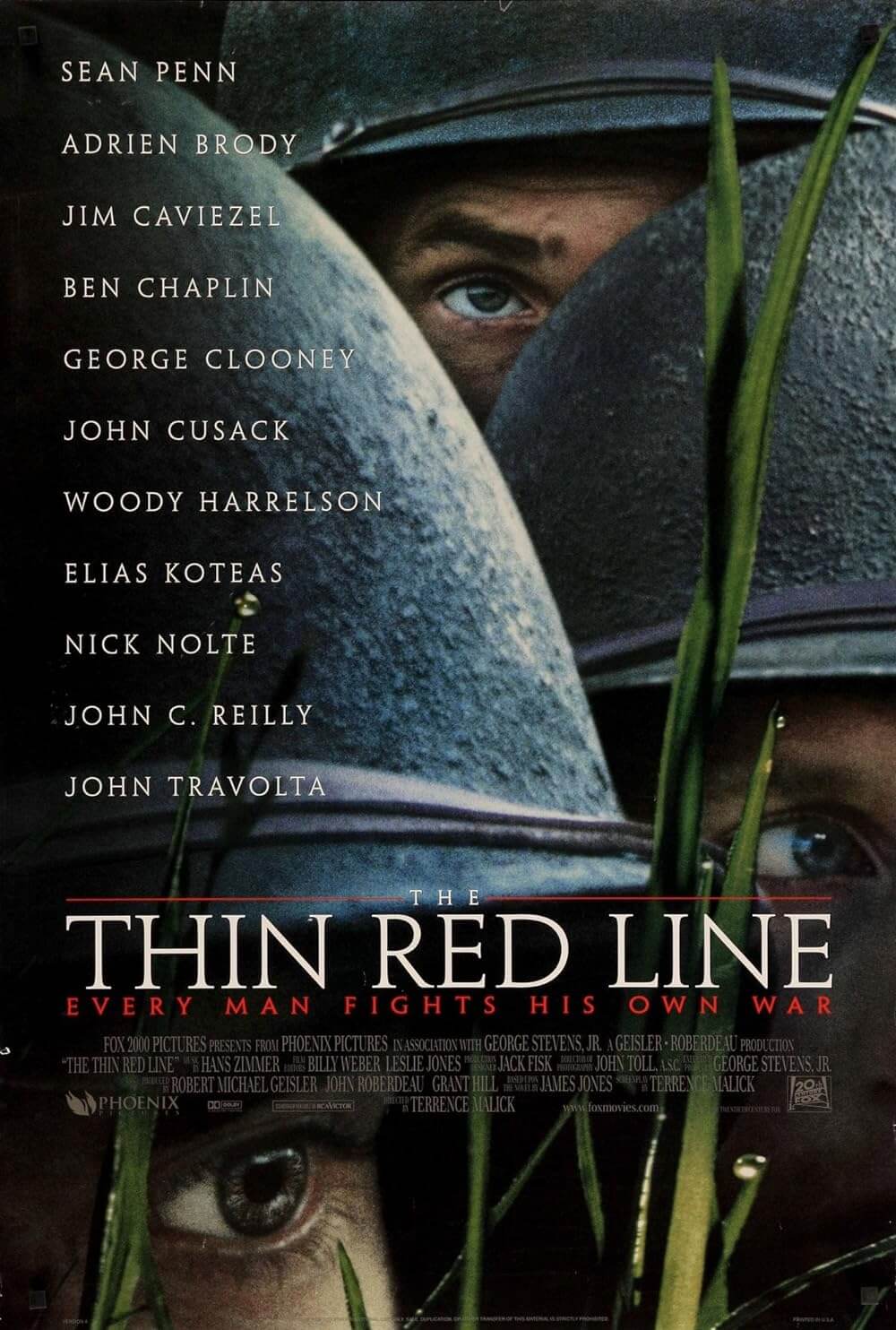
Unlock More from Deep Focus Review
To keep Deep Focus Review independent, I rely on the generous support of readers like you. By joining our Patreon community or making a one-time donation, you’ll help cover site maintenance and research materials so I can focus on creating more movie reviews and critical analysis. Patrons receive early access to reviews and essays, plus a closer connection to a community of fellow film lovers. If you value my work, please consider supporting DFR on Patreon or show your support in other ways.
Thank you for your readership!
Brian Eggert | Critic, Founder
Deep Focus Review


